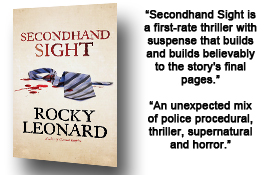
A semantic argument means literally having an argument about the precise meaning of a word or phrase. For communication to effectively occur between any two people, there must be some common understanding about the definitions of the words being used. For example, “mostly peaceful” protestors could also be described as “occasionally violent” rioters, depending on one’s own perspective.
Some people like to watch grown men put on boxing gloves and beat each other into a bloody pulp, but my idea of great entertainment is to watch a verbal jousting match between two intellectuals about a subject that ought to interest all of us, the origin of life. So, as I watched the debate between organic chemist Lee Cronin and synthetic chemist James Tour on the Unbelievable podcast hosted by Justin Brierly, I naturally expected to hear technical jargon and terminology used in their discussion that would sound foreign to me. While I was worried a phrase like “self-assembly of a nanoscale transition metal cluster” would baffle me, it honestly never occurred to me that these two brilliant scientists would be using words like “life” and “information” in a context that I didn’t quite understand.
After Dr. Tour provided the “textbook” definition of life according to Google (composed of cells, can reproduce, metabolize, etc.), and then said, “Information itself is not life. Would you agree with that? Life has information, but information itself is not life. I can have a piece of paper and write on that piece of paper. That piece of paper bears information, but that piece of paper does not have life.”
Dr. Cronin said, “No, no, no. So, that information on the paper is just as alive as you are, actually. But let me frame that properly, because I think again, most of our argument today may be semantic. If you did not exist, you would not be able to write on that piece of paper. So, if someone brings to me a piece of paper with words on it, that just tells me there is evidence of life somewhere. The problem we have with life and the origin of life and definitions is that we don’t have actually know what life is, and that’s a problem. So that’s why I made that very well thought out statement that universes without life can’t have information, because there’s no syntactic information, no encoder and decoder. Universes without life of course still have the laws of physics in them, and the laws of chemistry, but I’m really interested in that transition to a agency or decision-making entity like how many chemicals you need in a pot, and we’re beginning to see in my laboratory how that can be steered.”
Dr. Cronin accused Dr. Tour of not understanding what information is, but with all due respect to both of these brilliant scientists, neither one of them apparently understand the nature of information very well. Now, aside from merely stating the obvious (the paper could survive indefinitely without food, water, or air, so it isn’t alive by any conventional definition of life) there is another very important difference between information and life–
Information is knowledge, and must be processed from raw data in order to have meaning. Allow me to illustrate my point with a simple, hopefully familiar example–in the horror movie The Shining, young Danny sees an apparently nonsensical message written on a wall in red pain that says REDRUM. Even though he is alarmed, the message has no value to Danny because he lacks information necessary to decode it. But when he sees the message reflected in a mirror it reads MURDER, and the danger instantly becomes obvious to him.
Or, if you don’t like horror movies, let me write something less gruesome on Dr. Tour’s piece of paper. How about a real puzzle?
What does the following sequence of numbers mean?
00000010 00101011 00000010 00111101 00000100
Or does it even have any meaning? Can you guess? Probably not–without any hints and/or the ability to read computer binary language like normal people are reading these words, you’ll probably never guess the above numbers represent the equation 2 + 2 = 4 in machine language. The point is, before I told you the above sequence of numbers literally translated to a simple mathematical equation, it had no meaning to you. In other words, it was not information as far as you were concerned. It was simply noise, or raw data. Information does not exist without intelligence. Data does not evolve into information until it has been processed intelligently.
Dr. Cronin’s major breakthrough was learning that he could combine some natural molecule from a spring in Idaho with an acidic solution, and the ensuing reaction would create a self-replicating template that could potentially become a building block for life.
The interesting question is, if this scientist admits that he isn’t sure he knows what life is, how will he know if he manages to create life in his lab? Dr. Cronin describes the concept of Intelligent Design as not only nonsense but demonstrable nonsense. What can be learned from his experiments, then? He’s specifically selecting chemicals and acids that he knows will produce a desired result as a reaction. In other words, he’s using his knowledge based on information he’s learned from past experience to choose the ideal combinations to produce a desired end result. If Cronin succeeds in the lab, ironically, he’ll only have proved he’s a competent intelligent designer himself. Dr. Cronin will not have proved life could arise without the intervention of some sort of an intelligent agent capable of organizing and processing raw data into meaningful and useful information.
Data can exist without any intelligence needed in order to process it. Information cannot.

Speak Your Mind